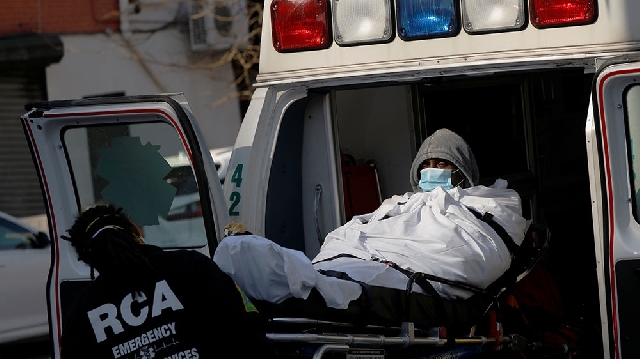Coronavirus: US cases rise past 3 million

The U.S. coronavirus outbreak crossed a grim milestone of over 3 million confirmed cases on Tuesday as more states reported record numbers of new infections, and Florida faced an impending shortage of intensive care unit hospital beds.
Authorities have reported alarming upswings of daily caseloads in roughly two dozen states over the past two weeks, a sign that efforts to control transmission of the novel coronavirus have failed in large swaths of the country.
California, Hawaii, Idaho, Missouri, Montana, Oklahoma and Texas on Tuesday shattered their previous daily record highs for new cases. The biggest jumps occurred in Texas and California, the two largest U.S. states, with more than 10,000 each. About 24 states have reported disturbingly high infection rates as a percentage of diagnostic tests conducted over the past week.
In Texas alone, the number of hospitalised patients more than doubled in just two weeks.
The trend has driven many more Americans to seek out COVID-19 screenings. The U.S. Department of Health and Human Services said on Tuesday it was adding short-term “surge” testing sites in three metropolitan areas in Florida, Louisiana and Texas.
In Houston, a line of more than 200 cars snaked around the United Memorial Medical Center as people waited hours in sweltering heat to get tested. Some had arrived the night before to secure a place in line at the drive-through site.
“I got tested because my younger brother got positive,” said Fred Robles, 32, who spent the night in his car. “There’s so many people that need to get tested, there’s nothing you can do about it.”
Dean Davis, 32, who lost his job due to the pandemic, said he arrived at the testing site at 3 a.m. Tuesday after he waited for hours on Monday but failed to make the cutoff.
“I was like, let me get here at 3, maybe nobody will be here,” Davis said. “I got here, there was a line already.”
In Florida, more than four dozen hospitals across 25 of 67 counties reported their intensive care units had reached full capacity, according to the state’s Agency for Health Care Administration. Only 17% of the total 6,010 adult ICU beds statewide were available on Tuesday, down from 20% three days earlier.
Additional hospitalizations could strain healthcare systems in many areas, leading to an uptick in lives lost from the respiratory illness that has killed more than 131,000 Americans to date. At least 923 of those deaths were reported Tuesday, the biggest single-day toll since June 10 but still far fewer than the record 2,806 tallied back in April.
A widely cited mortality model from the University of Washington’s Institute for Health Metrics and Evaluation (IHME) projected on Tuesday that U.S. deaths would reach 208,000 by Nov. 1, with the outbreak expected to gain new momentum heading into the fall.
A hoped-for summertime decline in transmission of the virus never materialized, the IHME said.
“The U.S. didn’t experience a true end of the first wave of the pandemic,” the IHME’s director, Dr. Christopher Murray, said in a statement. “This will not spare us from a second surge in the fall, which will hit particularly hard in states currently seeing high levels of infections.”








